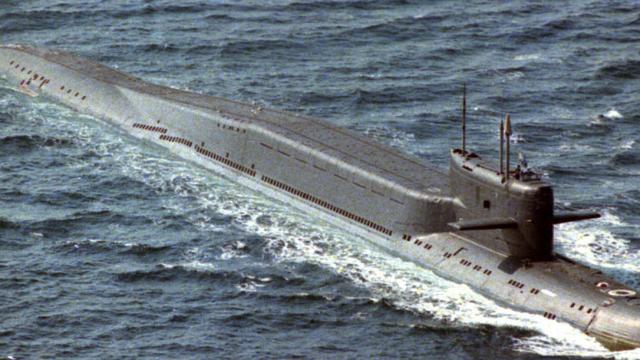At the end of World War II, just as relations between the US and the Soviet Union were beginning to freeze, America found itself dangerously vulnerable to Soviet ballistic missile submarine attack. To counter this potential nuclear threat to the Eastern seaboard, the US Navy set about devising an ingenious system of underwater listening stations that would eventually become one of the most effective oceanic monitoring systems ever created.
Development on the Sound Surveillance System (SOSUS) began in 1949 as a tactical, long-range means of countering the emerging Soviet submarine threat, most of which were still running on easily trackable diesel engines. The idea was to monitor the SOFAR channel, a horizontal layer of ocean water through which sound travels at its slowest speed. This allows low frequency sounds, like the knocking of a diesel engine to travel hundreds of miles before dissipating. As Edward C Whitman of Undersea Warfare explains:
In general, in warmer waters near the ocean surface, the sound speed is relatively high. At greater depths, where the water is increasingly cooler, the sound velocity decreases toward a minimum. At that point, pressure effects take over, and the sound speed begins to rise again as depth continues to increase. The deep sound channel is found at the depth where the sound velocity is a minimum. Because sound “rays” always tend to bend away from regions of higher sound velocity, a wave directed upwards from the sound channel axis will be refracted back down again — and a wave directed downwards will be bent upwards. Thus, sound paths from sources in the deep sound channel weave back and forth across the channel axis and — because they become “trapped” in a deep ocean layer away from the surface or bottom — can travel long distances with minimum attenuation. Moreover, if there exist propagation mechanisms available to bring near-surface sound down to the depth of the sound channel, those signals will also become trapped and traverse long distances with minimal loss. The sound channel axis is normally found at a depth of several thousands of feet, depending on thermal conditions, and because of the unusually warm waters of the Gulf Stream and Sargasso Sea, it lies more deeply in the Atlantic than in the Pacific.
By setting up multiple listening posts — arrays of hydrophones strung along lengths of cabling — at strategic choke points like the GIUK gap (the channels between Greenland, Iceland, and the UK), the US Navy would be able to triangulate and track the locations of otherwise invisible deep-diving Soviet subs.
This technology grew out of a pair of essential earlier advancements in sonar technology. The first, was the invention of the sonic depth finder (SDF) in the early 1920s, which itself grew out of active sonar technology developed during WWI. SDF allowed both militaries and oceanographic researchers to map the deep ocean in high detail for the first time, and led in part to the discovery of the SOFAR channel in 1937.
Additionally, MIT’s concurrent creation of the bathythermograph, a device capable of measuring relative temperatures throughout the water column, helped spur on development of SOSUS by revealing that water temperature — not just pressure and salinity — affects the distance that low frequency sound travels underwater.
After three years of intensive development, the Navy installed its first SOSUS array off the coast of Eleuthera, a small island in the Bahamas, in 1952. This array, which consisted of a 1,000 foot long string of 40 hydrophones sunk to 240 fathoms (1440 feet), spotted US subs in the area so well that the Navy immediately expanded the program to include the entirety of the eastern seaboard as well as the west coast and Hawaii in 1954.
The information gathered by these hydrophones had to be transmitted back to onshore naval facilities for analysis before they could be of any use. Each signal was processed so that it only measured a narrow band of frequency, which largely eliminated interference from background ocean noise and aided naval analysts in discerning the telltale acoustic signatures of the Soviets’ diesel war machines.
SOSUS immediately became an invaluable long-range early warning system for the Americans. It was eventually supplemented by surface-based listening posts like the Surveillance Towed Array Sensor System(SURTASS) and was later integrated into the larger Integrated Undersea Surveillance System (IUSS). The abrupt end of the Cold War certainly diminished our need for such a system, however, growing concerns of China’s rising naval power and Russia’s renewed agression have the Navy’s Space and Naval Warfare Systems Command (SPAWAR) propositioning to commercial ventures and defence contractors alike for a new generation of deep water listening stations. [Undersea Warfare – Military Aerospace – SPAWAR – Wiki 1, 2 – Global Security]
